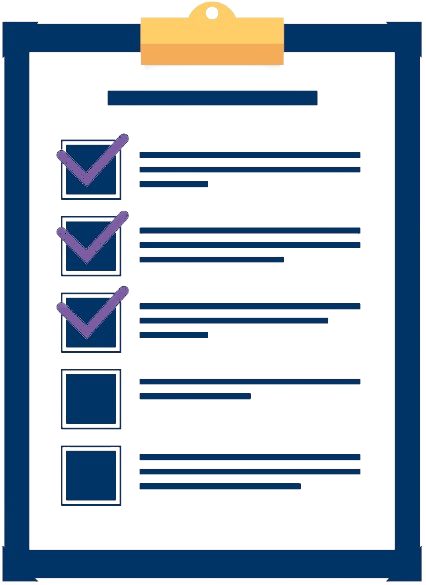Suggestions based on the Question and Answer that you are currently viewing
What are the desirable features of atomic or molecular self-assembly processes in nanotechnology?
The following defined pension data of Rydell Corp. apply to the year 2014. Projected benefi t obligation, 1/1/14 (before amendment) $560,000 Plan assets, 1/1/14 546,200 Pension liability 13,800 On January 1, 2014, Rydell Corp., through plan amendment, grants prior service benefi ts having a present value of 120,000 Settlement rate 9% Service cost 58,000 Contributions (funding) 65,000 Actual (expected) return on plan assets 52,280 Benefi ts paid to retirees 40,000 Prior service cost amortization for 2014 17,000 Instructions For 2014, prepare a pension worksheet for Rydell Corp. that shows the journal entry for pension expense and the year-end balances in the related pension accounts.
Boey Company reported net income of $25,000 in 2015. It had the following amounts related to its pension plan in 2015: Actuarial liability gain $10,000; Unexpected asset loss $14,000; Accumulated other comprehensive income (G/L) (beginning balance), zero. Determine for 2015 (a) Boey’s other comprehensive income, and (b) comprehensive income.
Would the world benefit from the general imposition of controls on the movement of international finance?
What is a cost object? Give 3 examples.
Cost variance analysis; use of variance information Baker Street Animal Clinic uses a particular serum routinely in its vaccination program. Veterinarian technicians give the injections. The standard dose is 10cc per injection, and the cost has been $100 per 1000cc. According to records, 2000 injections were administered last month at a serum cost of $2270. The veterinarian noted that the serum for the injections should have cost $2000 [($0.10 per cc) × (10cc per injection) × (2000 injections)]. Moreover, she noted some carelessness in handling the serum that could easily lead to unnecessary waste. When this issue was brought to the attention of the technicians, together with the $270 discrepancy in costs, they claimed that the $270 excess costs must be due to the inflated prices charged by the veterinarian supply company. Purchasing records reveal that the price for the serum used last month had indeed increased to $105 per 1000cc. Required (a) Provide variance calculations to help you evaluate the technicians’ argument. (b) Discuss whether a significant waste of serum occurred last month. Include quantitative and qualitative information in your discussion. (c) If you were the manager for the Baker Street Animal Clinic, how would you use the results of your analyses in parts (a) and (b)? Explain.
Provide examples of the four types of corporate culture.
Beverly Crusher is a licensed CPA. During the first month of operations of her business (a sole proprietorship), the following events and transactions occurred. April 2 Invested $32,000 cash and equipment valued at $14,000 in the business. 2 Hired a secretary-receptionist at a salary of $290 per week payable monthly. 3 Purchased supplies on account $700. (Debit an asset account.) 7 Paid offi ce rent of $600 for the month. 11 Completed a tax assignment and billed client $1,100 for services rendered. (Use Service Revenue account.) 12 Received $3,200 advance on a management consulting engagement. 17 Received cash of $2,300 for services completed for Ferengi Co. 21 Paid insurance expense $110. 30 Paid secretary-receptionist $1,160 for the month. 30 A count of supplies indicated that $120 of supplies had been used. 30 Purchased a new computer for $6,100 with personal funds. (The computer will be used exclusively for business purposes.) Instructions Journalize the transactions in the general journal. (Omit explanations.)
A 16 gage nickel wire (0.0508-in diameter) connects a solenoid to a control circuit that is 32.8 ft away. (a) What is the resistance of the wire? Use Table 4.3 as a reference. (b) If a current was passed through the wire, it would heat up. How does this affect the resistance?
How do partners determine whether they are passive participants in partnerships when applying the passive activity loss limitation rules?
Explain why investors that provided guarantees on commercial paper were exposed to so much risk during the credit crisis. (LO1)
David and Lilly Fernandez have determined their tax liability on their joint tax return to be $3,100. They have made prepayments of $1,900 and also have a child tax credit of $2,000. What is the amount of their tax refund or taxes due?
1. : Do the clinical trials in Albania, and if the drug is approved, use part of the profits to set up a compassionate use program in Albania, even though setting up a distribution system and training doctors to administer the drug, monitor patients for adverse effects, and track results will entail considerable expense.
A blanking die is to be designed to blank the part outline shown in Figure P20.4. The material is 4 mm thick stainless steel (half hard). Determine the dimensions of the blanking punch and the die opening.
Cost function; opportunity cost; relevant costs Yummy Yoghurt sells yogurt cones in a variety of natural flavours. Data for a recent month follow: Required (a) Categorise each cost as fixed or variable. (b) Create a cost function.
On January 1, 2014, Barwood Corporation granted 5,000 options to executives. Each option entitles the holder to purchase one share of Barwood’s $5 par value common stock at $50 per share at any time during the next 5 years. The market price of the stock is $65 per share on the date of grant. The fair value of the options at the grant date is $150,000. The period of benefit is 2 years. Prepare Barwood’s journal entries for January 1, 2014, and December 31, 2014 and 2015.
Is the cost of funds obtained by finance companies very sensitive to market interest rate movements? Explain. (LO4)
Cartman Corporation owns 90 shares of SP Corporation. The remaining 10 shares are owned by Kenny (an individual). After several years of operations, Cartman decided to liquidate SP Corporation by distributing the assets to Cartman and Kenny. The tax basis of Cartman’s shares is $10,000, and the tax basis of Kenny’s shares is $7,000. SP reported the following balance sheet at the date of liquidation:
Pierre Company has a 12% note payable with a carrying value of $20,000. Pierre applies the fair value option to this note. Given an increase in market interest rates, the fair value of the note is $22,600. Prepare the entry to record the fair value option for this note.
What are the major types of subsequent events? Indicate how each of the following “subsequent events” would be reported. (a) Collection of a note written off in a prior period. (b) Issuance of a large preference share offering. (c) Acquisition of a company in a different industry. (d) Destruction of a major plant in a flood. (e) Death of the company’s chief executive officer (CEO). (f) Additional wage costs associated with settlement of a four-week strike. (g) Settlement of an income tax case at considerably more tax than anticipated at year-end. (h) Change in the product mix from consumer goods to industrial goods.
Morlan Corporation is preparing its December 31, 2014, financial statements. Two events that occurred between December 31, 2014, and March 10, 2015, when the statements were authorized for issue, are described below. 1. A liability, estimated at $160,000 at December 31, 2014, was settled on February 26, 2015, at $170,000. 2. A flood loss of $80,000 occurred on March 1, 2015. Instructions What effect do these subsequent events have on 2014 net income?
Identify the four major types of ingredients in organic coatings.
Presented below is information related to Ivan Calderon Corp. for the year 2014. Net sales $1,300,000 Write-off of inventory due to obsolescence $ 80,000 Cost of goods sold 780,000 Depreciation expense omitted by accident in 2013 55,000 Selling expenses 65,000 Casualty loss (extraordinary item) before taxes 50,000 Administrative expenses 48,000 Cash dividends declared 45,000 Dividend revenue 20,000 Retained earnings at December 31, 2013 980,000 Interest revenue 7,000 Effective tax rate of 34% on all items Instructions (a) Prepare a multiple-step income statement for 2014. Assume that 60,000 shares of common stock are outstanding. (b) Prepare a separate retained earnings statement for 2014.
As part of the year-end audit, you are discussing the disclosure checklist with your client. The checklist identifies the items that must be disclosed in a set of IFRS financial statements. The client is surprised by the disclosure item related to accounting policies. Specifically, since the audit report will attest to the statements being prepared in accordance with IFRS, the client questions the accounting policy checklist item. The client has asked you to conduct some research to verify the accounting policy disclosures. Instructions Access the IFRS authoritative literature at the IASB website (http://eifrs.iasb.org/). (Click on the IFRS tab and then register for free eIFRS access if necessary.) When you have accessed the documents, you can use the search tool in your Internet browser to respond to the following questions. (Provide paragraph citations.) (a) In general, what should disclosures of accounting policies encompass? (b) List some examples of the most commonly required disclosures.
dentify three ways taxpayers can pay their income taxes to the government.
The benefits of buying with AnswerDone:

Access to High-Quality Documents
Our platform features a wide range of meticulously curated documents, from solved assignments and research papers to detailed study guides. Each document is reviewed to ensure it meets our high standards, giving you access to reliable and high-quality resources.

Easy and Secure Transactions
We prioritize your security. Our platform uses advanced encryption technology to protect your personal and financial information. Buying with AnswerDone means you can make transactions with confidence, knowing that your data is secure

Instant Access
Once you make a purchase, you’ll have immediate access to your documents. No waiting periods or delays—just instant delivery of the resources you need to succeed.
